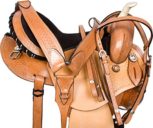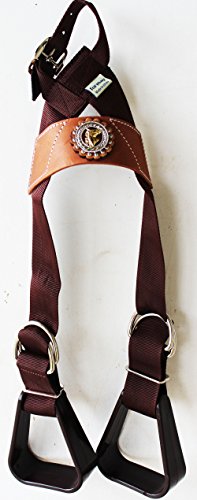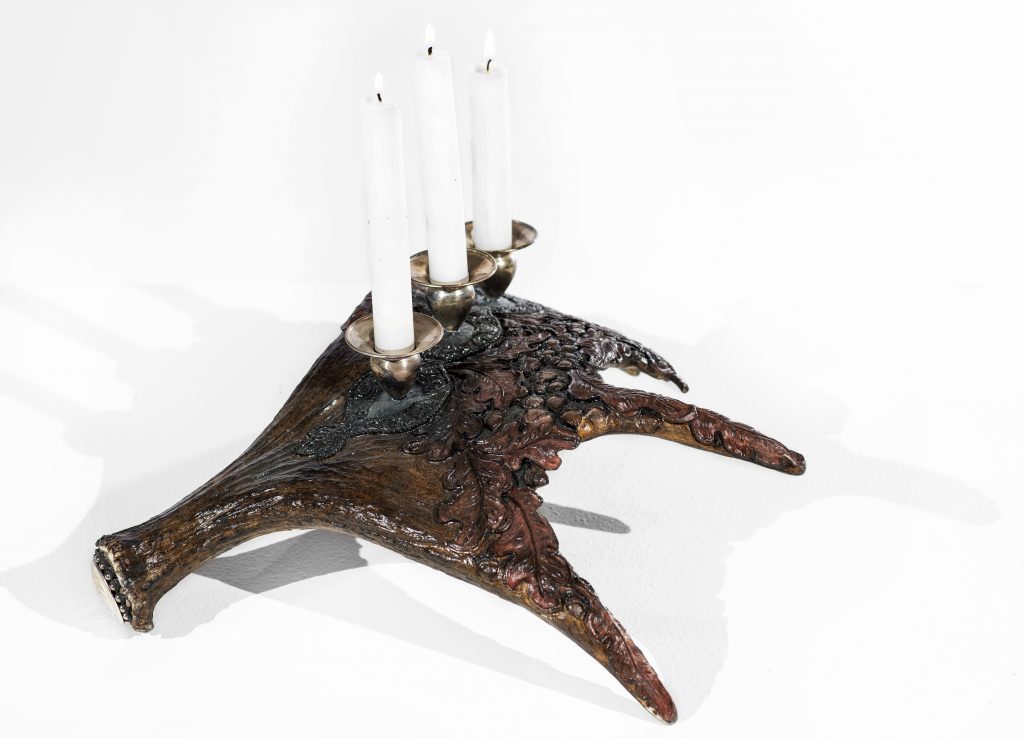[ad_1]
Master artisans work together to perpetuate the craftsmanship of the West.
The artisan members of By Western Hands demonstrate quality workmanship within American West functional art — objects crafted equally for their utilitarian use and aesthetics. Based out of its gallery in Cody, Wyoming, the group seeks to educate, conserve, and perpetuate the legacy of Western design and craftsmanship.
And the accomplished members make fabulous works that are exemplars of functional art and the fruit of years and thousands of hours of practice.
“It’s not just about a table, chair or sofa,” says Graham Jackson, a By Western Hands board member. “There are many types of unique Western functional art. Our focus is to preserve its craftsmanship and to teach the necessary skills, so we don’t lose the art.”
By Western Hands resulted from the highly successful Western Design Conference and Cody High Style annual exhibitions. Artisans hail from the Great Plains to Washington state’s Cascade Mountains. They craft with wood, steel, silver, bone, wool, leather, and stone. Their creations foster pleasure: a well-turned knife balanced in the hand; a live-edge table sanded to polish smooth; a saddle shaped for ultimate horse and rider comfort; and an ottoman crafted to become an heirloom. To a person, they are all masters of their crafts, and, yet, they value their membership for its fellowship and collaborative learning opportunities.
To be a master is to be a lifelong learner. We talked with some of the master artisans of By Western Hands about inspiration and craftsmanship. Read the feature from our July 2021 issue, and enjoy the work of these additional artisans.
Jenny Booth
Bone Carving Artist, Wyoming
Carving bone is innate for Jenny Booth. Whittling sticks as a kid led her to carve a design on an elk antler in the 1980s. Next, she created some antler bolo ties and belt buckles that were in vogue at the time. Since then, Booth has scaled up her carving to skulls and antlers that function as candelabras, lamps, and wine racks. She jokes that, to prevent the starving artist syndrome, her work also includes horse-related jobs that range from backcountry guiding to training cutting horses to now ranching in Wyoming. Throughout, Booth roots herself in the natural world of animals.
What Inspires
“The contents of my designs — whether livestock brands, floral, Celtic knots, etc. — depends on customers’ requests. Symmetry guides how I carve skulls. I definitely sketch the design onto the skull beforehand. For antlers, I just go for it! I let the piece develop through a fluid, loose approach.
“Sometimes I have an idea for a piece, like a wine rack, and I must wait until I find the proper antler. An antler’s shape and beam must hold certain characteristics to hold the neck of wine bottles. When I finally got an antler that fit, I carved a grape motif on it.”
Artistic Process
“Every piece is a fun challenge because of the backward approach of starting with a solid and carving away to the end product. Often people send me skulls that they have from hunting or a special animal, such as a horse. Once I carved a design on the skull of a deceased National Finals Rodeo bucking bull. The owners had kept his skull. It was just kicking around the barn gathering dust before they sent it to me. My carved design breathed life back into the animal that was remarkable in life. His skull now hangs above the fireplace.”
Furthering the Craft
“My carving process is subtractive because it removes material to form the design. An artist friend, Tim Cox, encouraged me to try sculpting. I did, and I enjoyed how it’s an additive process. If I didn’t like the head of a horse on the clay model, I could just rip it off and put on a new one. I navigated back to carving, though. It’s my thing.”
Represented by the By Western Hands Gallery in Cody, Wyoming.
Chris Chapman
Architectural Leather Artist, Wyoming
Chris Chapman’s work elevates leather to new heights. She invented high-relief and bas-relief leatherwork and then applied it to decorative paneling on bars, doors, and wardrobes. Chapman molds vignettes of people and animals that illustrate Western history into the leathering paneling. Providing enjoyment to people is her life service, whether through her art or her equine gestalt coaching to assist people recovering from trauma. Chapman’s realistic portrayal of animals in her art came through learning anatomy in veterinarian technician school.
What Inspires
“My perspective is that the West is heavily influenced by European style. This is evident in the apparel of the Iroquois people in the 1600s, or 17th to 18th centuries, that incorporated European tailoring. In the early 1800s, when as white men moved West, the European style influence and tailoring skills weren’t available. People wore simplified shirts laced together with deerskin, and, draped over their bodies, hides embellished with beadwork. I enjoy creating the historically accurate costuming and architecture for my designs.”
Artistic Process
“The initial idea for my high-relief leather designs came from the glued layers of leather stacked to form a cowboy heel on a boot. I stack up glued leather, cut out the profile of an element, and then shave and sculpt it. For the paneling, I mold and massage a single piece of leather over all of the shapes and animals. I work out the detail with traditional saddle stamping tools. For large panels, such as a 7½-foot-wide bar front that I did, I used sculptor’s clay to form the herd of running horses. Then, I make a mold, a casting, and then mold thin saddle leather over the casting.”
Furthering the Craft
“I crafted an 8-by-4-foot front door once with my architectural leather. I want to use the same technique and bronze it, instead of leather. The clay sculpting would be created on the panel, and then a foundry would bronze it. The result would be a bronze decorative panel with its vignette in high-relief casting. I also transition my sculptural work into 2-dimensional painting. I’m working on a panel of running horses right now, and, instead of molding leather over the clay figures, I’ll paint them.”
Represented by the By Western Hands Gallery in Cody, Wyoming.
Dennis Friedly
Knife Maker, Wyoming
In the way that many learn a craft, Dennis Friedly entered the knife business as a shop hand who cleaned and completed simple tasks. He watched, learned, and fell in love with knife making. In high school and college, Friedly had dabbled in graphic and fine arts, such as oil painting and sculpting. He incorporates the same artistic principles into the knives he makes in his Wyoming studio. Though he mostly creates highly embellished knives in collaboration with engravers and scrimshawers, Friedly continues to make utilitarian knives like the Elmer Keith design he learned years ago in Harvey Draper’s shop.
What Inspires
“I find ideas for knives in history and literature. I do some reproductions, such as from the Civil War. Mainly, though, my knives are whatever I decide to put into them. I hand craft each knife. Some may look similar because they share a blade style, but each is one of a kind.”
Artistic Process
“I’m a free-hander of blades. I don’t use a rest or any kind of a jig. I hold the metal in my hands and grind to profile the blade. I create my handles in the same manner. Most of the components on my handles, even my art daggers, are sculpted out of a block of steel. I can tap a square piece of steel, put a bolt in it, and free-hand shape parts that I need for the knife just by hand and eye.”
Furthering the Craft
“There’s more and more knife makers coming into the industry, because they can learn how to make knives right off of YouTube. The art, it’s just incredible now. You can go online and look at the different engravers and metal sculptors. The Damascus craft is artwork now. It’s trended that way for the last 15 years.”
Represented by Nordic Knives Gallery in Boise, Idaho; Friedly Brother’s Gallery in Powell, Wyoming; By Western Hands Gallery in Cody, Wyoming; Cutting Edge Gallery in Rogers, Arkansas.
Thome George
Rustic Twig Furniture Maker, Washington
A childhood spent camping led Thome George to participate in a 30-day backcountry expedition in Wyoming with the National Outdoor Leadership School. Since then, he’s only lived in the mountains of the West. During a several-year stint of living fully off the grid, sans electricity and plumbing, George began to build his own furniture. His furniture design was inspired by the bark-on twig style of New York’s Adirondack Mountains. Initially, it was more out of need for furniture than the desire to be artistic. Today, he creates rustic twig furniture with art nouveau lines out of his Washington State studio.
What Inspires
“In the beginning, I did a lot of drawings and followed them fairly meticulously. But, after getting really familiar with the wood and process, I now harvest wood and let what I find decide its design. Birch is a very expressive wood. It has a lot of motion in it. I try to capture that in the furniture.
“I tired of building four-legged tables. I just wanted to see if I could push to the edge of functional. I’ve built tables with five to six legs that look like they’re alive. The tables hold objects on them, but they go right up to the edge of that.”
Artistic Process
“I go out and find wood that fits the scale for people’s homes, like for eating at a table or sitting and reading. Water birch grows more as a shrub, than a branching tree. Each stalk that comes up out of the ground is a branch, but they’re independent of each other. I harvest wood from private landowners. Often, in exchange, I build them a piece of furniture. I never clear-cut. I select for shape.
“I studied architecture in college. I am familiar with the styles of different eras. Out in the woods, I see similar shapes in the trees. Gathering is one of the most enjoyable things, because the act of discovery is really satisfying. I bring the birch home and re-create the styles in twig format. It’s a case of nature imitating art or vice versa. The wood leads me to what I build. I use the wood as it is. I’m just the implementer. I’m not the actual creator.”
Furthering the Craft
“Through the local arts alliance, I’ve taught twig art classes in the third- and fourth-grade classes. They learned to see how elements from nature can be used in art. I’m also a poet, and, through the art alliance, I work with high school students in the Poetry Out Loud national program. Poetry is about picking and choosing which words to use. It’s very similar to selecting wood for my furniture.”
Represented by The Confluence Gallery in Twisp, Washington, and By Western Hands Gallery in Cody, Wyoming. sweettreedesigns.com
Loren and Lisa Skyhorse
Saddlemakers, Colorado
Saddlemaking was a male-dominated trade when 22-year-old Lisa Skyhorse apprenticed with Oregon saddlemaker Lawrence Dewitt in 1973. Loren Skyhorse was a biologist when he met Lisa in 1976. She soon taught him how to build saddles. Their love for their craft led them to establish a saddle shop, which is now based in Colorado. The Skyhorses build custom saddles, from trail saddles to elaborate art saddles. Their saddles exhibit elegance in workmanship and functionality.
What Inspires
“I love telling stories with the saddles. First, I draw and carve the designs; then I paint on the saddle leather as if it is canvas,” Lisa says.
“Our evolution has always been based on what a customer wants to ride and making something different. We like edgy,” Loren says.
“One of my favorite edgy saddles is the Golden Eagle saddle, which is American-themed,” Lisa says. “The horn is a bronze eagle head, and then the whole saddle is carved in eagle feathers. I carved and painted 780 feathers on it. The stirrups have eagle talons on them. When you stand back it looks like an eagle perched on a limb, the saddle stand, but it’s actually a saddle that you could really ride.”
“Because of the stories that the saddles tell, we normally name them,” Loren says. “We did a saddle called All You Need Is Love. It is themed on the Beatles song. It has little sayings engraved into it about being kind to people, or being good to the universe. At first glance, the saddle appears like a fully tooled floral pattern. When you look closer and begin to read it, you realize there is a storyline.”
Artistic Process
“Lisa is the artist, and the inspiration for how our saddles are going to look,” Loren says. “I simply provide critique. In the shop, we’re very specialized these days. All the braiding that you see on the edges, I do. Construction-wise, we split about 50, 50. Lisa is responsible for carving what’s called the ground seat for a particular person of a certain sex and a certain body type to ride comfortably. I install the rigging.”
“I create high relief in the leather by wetting it and pushing it up from behind to sculpt into the shape that I want,” Lisa says. “Then, I cut leather plugs and layer them behind to maintain the form. I do all the artwork, the carving, tooling, and painting. After the saddle is constructed, then the saddle is oiled. Loren’s specialty is oiling it for a contrast that highlights the art.”
Furthering the Craft
“We love to travel and we’re horse people,” Lisa says. “We spent two months in Mongolia working with nomadic horsemen. We’ve spent two months in Siberia working with saddlemakers there, too. We’ve been to Peru to work with saddlemakers. We’ve also worked with the Navajo Tribal Arts Council in Flagstaff to teach leatherworking. We really want to pass this art form on.”
skyhorse.com
Photography: (All images) courtesy the artists
From our July 2021 issue
Adblock test (Why?)
[ad_2]
Source link

















Comments
Comments are disabled for this post.